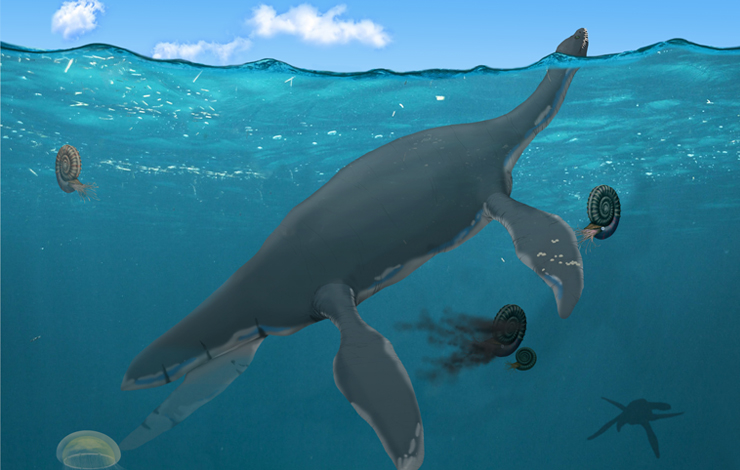14-06-2021

Image: Simão Mateus
A new genus and a new species of plesiosaur was discovered, in the region of São Pedro de Moel (Marinha Grande). This is the most complete and oldest plesiosaur found in the Iberian Peninsula, belonging to the beginning of the Jurassic Period, around 195 million years ago.
Plesiosaurs were marine reptiles, from the Age of Dinosaurs, that had to come to the surface to breathe. Its limbs, arms and legs, evolved into fins. Its shape is reminiscent of the mythical “Loch Ness Monster.”
The new Portuguese species was named Plesiopharos moelensis, which means “near the lighthouse of [São Pedro] de Moel”, and also refers to its family affinity with the plesiosaurs.
The fossil of the Plesiopharos, just described, consists of parts of the fin of the right arm and leg, of the chest and the neck. This was found by two collectors, Victor Teixeira and António Domingos, who donated the find to the Lourinhã Museum. The fossil was completely prepared and studied in the Dino Parque laboratory by a team of paleontologists and geologists linked to the NOVA School of Science and Technology and to Lourinhã Museum. The research was coordinated by Simão Mateus, and its leading author is Eduardo Puértolas-Pascual, researcher at the NOVA School of Science and Technology and at the Museu da Lourinhã.
The example that these two collectors set by donating this material takes on even greater significance when the Portuguese coast is increasingly suffering from looting and uncontrolled fossil harvesting, which threatens the preservation of the Portuguese paleontological heritage.
The new discovery was published in the open access journal Acta Palaeontologica Polonica and will soon be the center of a temporary exhibition at Dino Parque da Lourinhã.